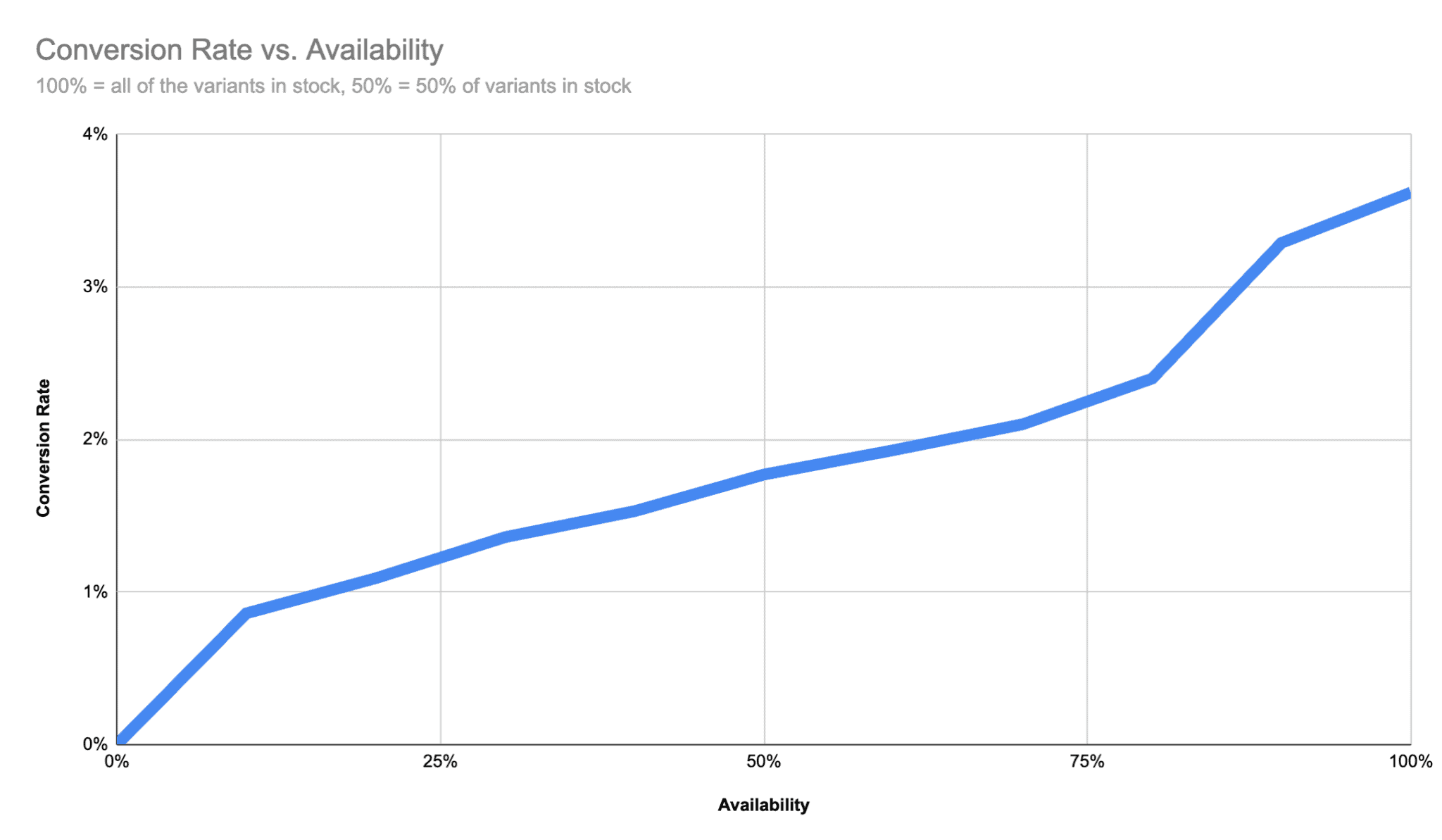Updated on October 3, 2024 | 2 minute read | Dr Ingvar Kraatz
Home > Resources > How does stock availability affect conversion rate?
With the help of a current client of ours, we recently conducted a small experiment to better understand online consumer behaviour in relation to the stock availability of individual SKUs. In particular, we were interested in finding out how the conversion rate is affected by the availability of products, especially when coveted variants of your items go out of stock.
How we help our clients beat the competition
First, we found that Shopping ads for products with 100% stock availability (in all sizes) generally received the highest conversion rate. As variants of that stock begin to sell out, the conversion rate begins to drop in correlation with the level of available stock.
Usually, the most popular variants (e.g. sizes medium and large for fashion retailers) sell out first. This means that your potential customers will arrive on the product page to find their desired size (or other variants) is out of stock, preventing them from purchasing the product. This can lead to a sharp drop in the conversion rate, even if only one or two variants are selling out.
Consequently, if more of your potential customers visit your product page only to find their chosen size/color variant is no longer in stock, it’s very likely that not only will the conversion rate for the parent SKU drop, your ROAS will suffer repercussions as a consequence.
The graphic below demonstrates the results of our analysis:

From the graph, we can infer that when stock availability drops to 10%, the resulting conversion rate achieved is half of what it is when stock is at 60% availability.
Discover how innovative MarTech and AdTech companies are helping leading retailers optimize conversion rates using these advanced technologies in our guide for ecommerce retailers.
One way to stay on top of varying stock levels on Google Shopping is by using custom labels. Custom labels are used to help retailers better organize their Shopping campaigns using attributes important to your business. You can read more about custom labels here.
This will enable you to analyze the data from the custom labels, which can then be used to build a report in Google Adwords. This method should facilitate monitoring and assigning new, lower CPCs for SKUs with low availability, and vice versa when the item is restocked.
As always, adding in these custom labels for your entire inventory can be extremely time-intensive, and difficult to stay on top of. Bidnamic can monitor stock availability for every SKU in your feed to analyze and action a new CPC without overbidding or jeopardizing your ROAS target. Thus, with our AI-driven automation, there’s no need to add custom labels or input manual updates in the Google Merchant Center or Adwords.
Bidnamic takes the legwork out of Google Shopping bid management: find out how. To take back your valuable time spent poring over Google Shopping, book a demo with one of our specialists today.

